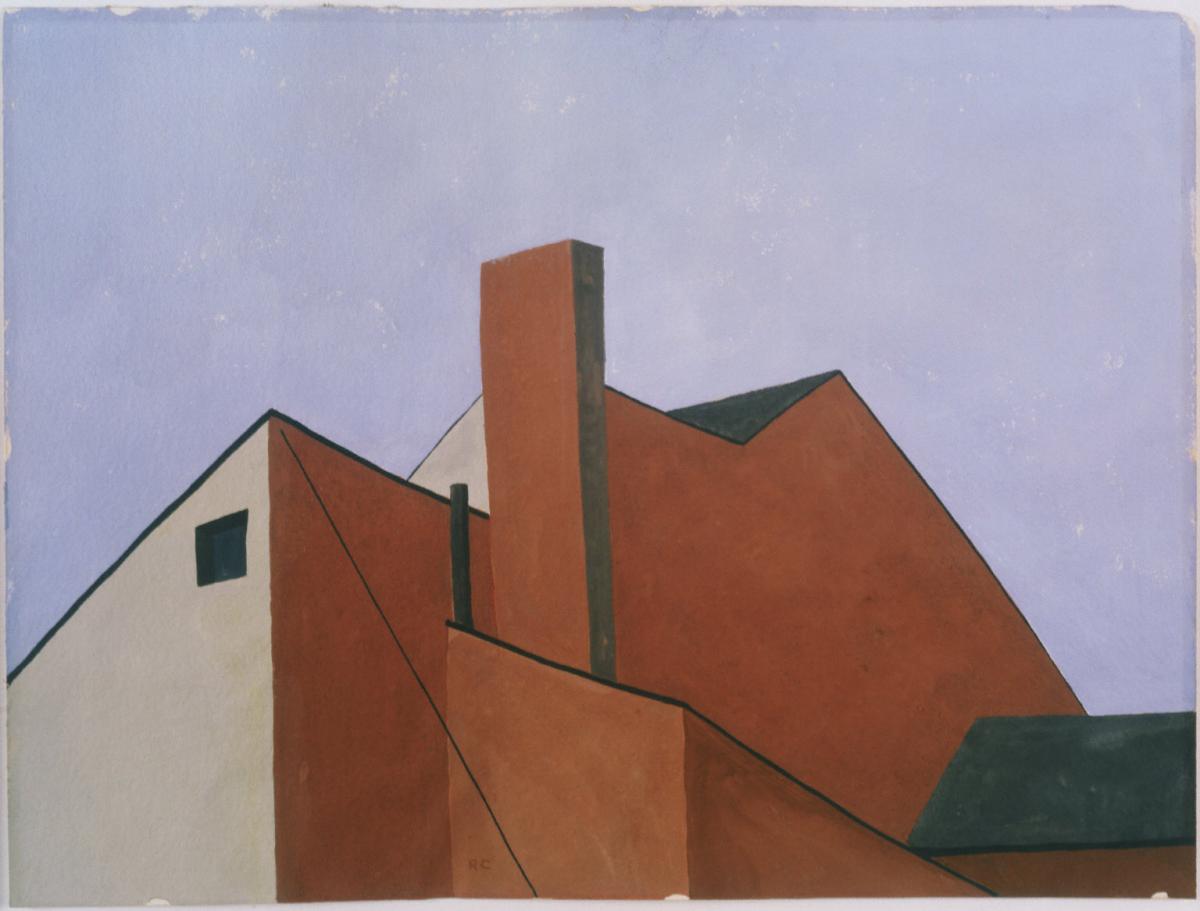Factory Roofs
Ralston Crawford ( c. 1934 )

While other artists began to turn away from modernism during the early 1930s, Ralston Crawford continued to work in the precisionist style to create smoothly painted, planar images of subjects associated with America industrialism. As Crawford developed his artistic mode, he adopted a geometric style that was influenced by both cubism and the purist compositions he had seen during his time in Paris, and incorporated the modern American city into his artistic vocabulary, working in a strictly precisionist methods. By 1934, in paintings such as Factory Roofs, Crawford’s works show the simplification and distillation of form and color that exemplify the modern style.
From 1934 to the early 1940s, Crawford’s compositions relied on massed geometric architectural forms and flat angular planes, devoid of human presence. Crawford used a relatively subdued palette, playing up the bleakness of his images. His painting focuses on subjects—silos, barns, bridges, and industrial buildings—that he had seen, and American towns he had visited, primarily in rural Pennsylvania. Factory Roofs, painted in 1934, was executed during a time in which Crawford was working in Chadds Ford and Exton, Pennsylvania. In this picture, Crawford used a restricted palette, which corresponds to the simplification of form into flat planes that form the top section of an industrial factory. Though highly abstracted, the subject remains intelligible, testifying to Crawford’s great skill in merging abstraction with recognizable imagery.